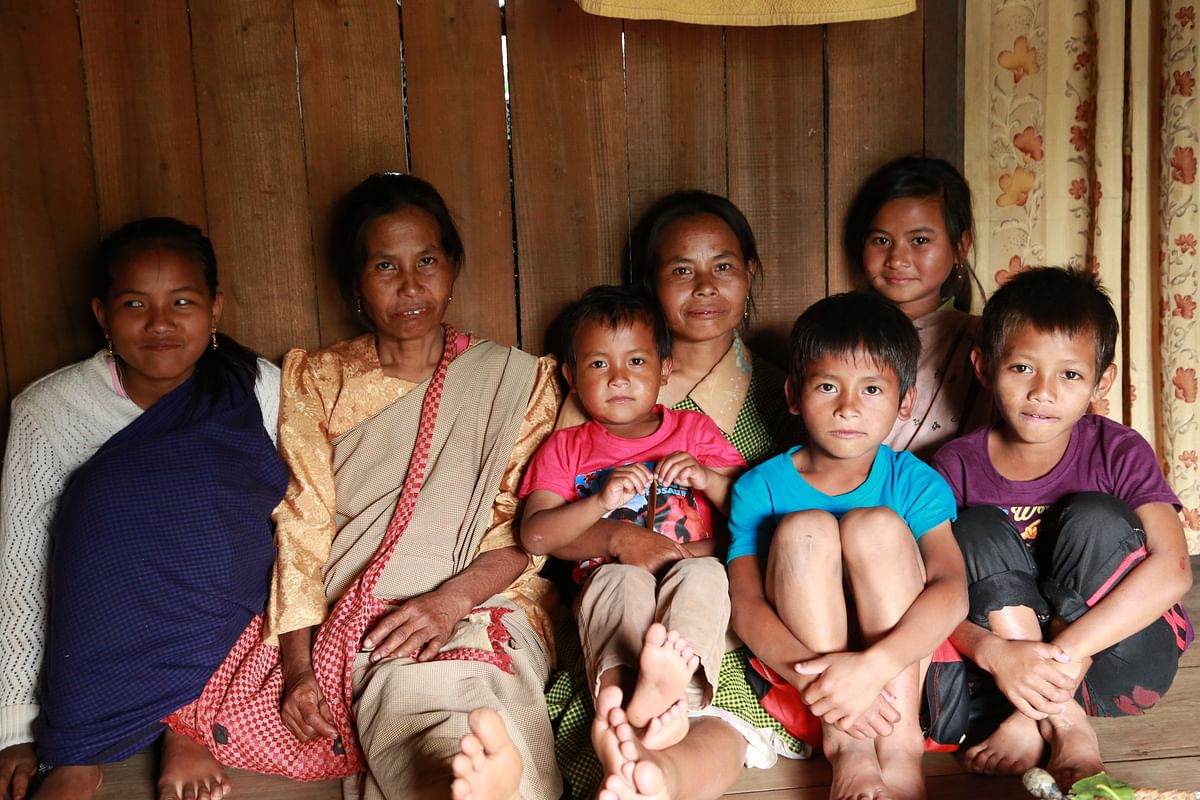Unveiling The Whistle Village of Meghalaya: Kongthong
.jpg) |
| Woman of Kongthong Whistling |
Whistling is a traditional method of communication that has been around for thousands of years and has roots in various parts of the world. This language was skillfully created by these varied groups to communicate over great distances while separated by immense mountains, deep woods, and impenetrable forests. The Silbo Gomero of the Canary Islands, the Black Sea Bird Whistlers, the Hmong of Southeast Asia, and the Mazatec of Mexico are a few of the most well-known whistling groups. The Whistle Language has a long history, and each tribe has its own distinctive whistling patterns and methods.
An intricate and highly organised language is Silbo Gomero. It has its origins on the Canary Island of La Gomera, which is an outlying territory of Spain. The history of Silbo Gomero spans several centuries and is intricately entwined with the island's culture and traditions. It is built on a whistling technique that uses various pitches and tones to simulate the Spanish language's vowels and consonants. Specific words, phrases, and even subtle meanings are communicated via the use of whistle patterns and melodies.
 |
| Girls from Hmong |
 |
| Canary Island |
The whistling tradition and history of Kongthong go back many generations. Native Khasi people who live in the hamlet have used this amazing mode of communication for years. The Kongthong whistling language evolved as a way of communication due to the difficult environment of the area, which is made up of steep terrain, dense woods, and deep valleys.
Every person in Kongthong is born with a unique melody or tune known as a "jingrwai lawbei". These tunes are created by mothers for their children, which gives each member of the community a distinct personality. The melodies frequently draw inspiration from environmental noises like bird chirping, leaf creaking, and streams flowing. This custom illustrates how closely connected the Khasi people are to their natural environment.
Kongthong has an elaborate whistling language with its own grammar and vocabulary. To transmit certain messages and meanings, the villagers employ a variety of pitches, tones, and harmonies. Since whistling melodies can be heard from far away, it is possible for individuals to communicate well even when they are separated by great distances. According to legend, in good weather, the whistling may be heard up to a mile away.
This community's distinctive communication mechanism has several uses. It can be used to summon people, call for community gatherings or meetings, issue danger alerts, or disseminate vital information regarding occasions or crises. The whistling language is engrained in the culture and social structure of Kongthong, and the villagers speak it with impressive fluency and comprehension.
Researchers, linguists, and tourists have all recently been interested in the Kongthong whistling tradition. Since the whistling language is an oral tradition and a part of the cultural legacy, linguists and academics have travelled to the community to record and study it. In order to guarantee that this distinctive form of communication survives in the face of modernization and shifting lifestyles, efforts have been undertaken to conserve and promote it.
In the peaceful village of Kongthong, a struggle to preserve their beloved tradition in the face of a fast-changing world takes place. The old ways, including the beautiful whistling language, are under existential threat as modernity and development pound on their doors and are on the verge of disappearing altogether. Despite these obstacles, the community sets out on a determined mission to preserve the survival of this unique linguistic masterpiece for future generations. They are joined in their efforts by ardent cultural lovers.
Today, Kongthong is a well-liked tourist destination, attracting tourists who are enthralled by the whistling tradition of the town. Visitors may hear the mesmerising whistles, see the villages practising this age-old custom, and learn about the rich cultural history of the Khasi people. More than just an intriguing means of communication, Kongthong's whistling language is a crucial component of the community's culture. We look at how their folklore, rituals, and musical history are woven together to form their way of life and bolster their sense of community.A living example of the Khasi community's creativity, resiliency, and rich cultural traditions is the Whistle Village of Kongthong. It serves as a stunning illustration of how a distinctive communication system may develop over time to meet the special requirements of a place, creating a strong sense of identity and community among its residents.



Comments
Post a Comment